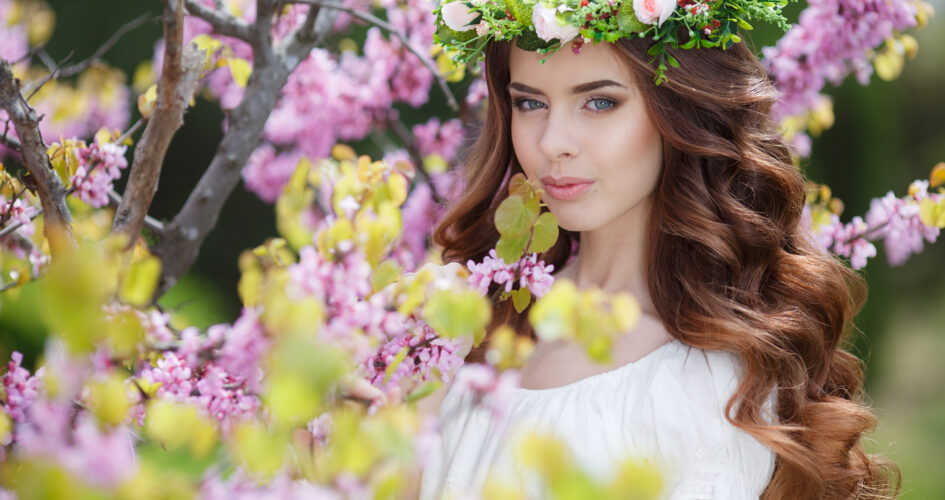
The Top 10 Organic Herbal Hair Color Ingredients
Many people are discovering about the advantages of Cultivator Organic Herbal hair color ingredients as they make the transition to healthier and more environmentally friendly lifestyle choices. The top 10 organic herbal hair color substances will be covered in this blog post in order to help you attain brilliant, chemical-free locks and transform your hair care regimen.
1. Henna (Lawsonia inermis):

Henna’s rich red hues have adorned hair for centuries. Henna, derived from the Lawsonia inermis plant, is a natural hair colorant. Additionally, it not only imparts beautiful red tones but also acts as a deep conditioner. Furthermore, it adds shine and strengthens the hair strands. Its natural properties make it a safe and non-toxic alternative to synthetic hair dyes. Moreover, it promotes scalp health and prevents dandruff.
2. Indigo (Indigofera tinctoria):

Indigo, when combined with henna, can create a spectrum of colors. It’s a natural alternative to synthetic black hair dyes. Indigo, sourced from the Indigofera tinctoria plant, is a natural dye that provides rich blue-to-black shades for hair. Its benefits include safe and chemical-free coloring, along with potential scalp-soothing properties. Often used in combination with henna, indigo offers a natural way to achieve darker hair colors while maintaining hair health.
3. Amla (Phyllanthus emblica):

Amla, or Indian gooseberry, is a treasure trove of benefits for hair. Its high vitamin C content strengthens hair follicles, reduces hair fall, and promotes healthy hair growth. Amla’s antioxidants also help prevent premature greying while providing a natural shine and lustre to your locks. It’s a popular addition to herbal color formulations.
4. Chamomile (Matricaria chamomilla):

Chamomile imparts golden tones to light hair. It’s a natural highlight enhancer that also soothes the scalp and adds shine. Its anti-inflammatory properties help soothe an irritated scalp and reduce dandruff. Regular chamomile treatments can add gentle highlights and contribute to overall scalp health.
5. Hibiscus (Hibiscus sabdariffa):

Hibiscus petals create a reddish tint and add shine. Hibiscus is a potent flower that promotes hair growth by strengthening hair follicles and preventing hair fall. Rich in antioxidants, it also combats oxidative stress, contributing to vibrant and healthy hair. Hibiscus has been used for generations to prevent premature greying, condition the hair, and add a natural shine.
6. Bhringraj (Eclipta alba):

Bhringraj, scientifically known as Eclipta alba, is an herb celebrated for its remarkable benefits for hair health. It’s renowned for promoting hair growth by nourishing hair follicles and improving blood circulation to the scalp. Bhringraj also helps prevent premature greying of the hair and effectively tackles issues like dandruff and dryness, making it a potent natural remedy for achieving strong, lustrous locks.
7. Beetroot (Beta vulgaris):

Beetroot is a hair-friendly vegetable rich in vitamins and minerals that nourish the scalp, promote healthy hair growth, and preventing hair loss. Its natural pigments add a vibrant shine to hair, while its antioxidants contribute to scalp health by combating free radicals and reducing inflammation. Regular consumption or application of beetroot juice can lead to stronger, glossier hair.
8. Fenugreek (Trigonella foenum-graecum):

Fenugreek is a hair care powerhouse, rich in proteins and nicotinic acid that strengthen hair follicles, reduce hair thinning, and promote hair growth. Its high mucilage content helps moisturize the scalp, combating dandruff and soothing irritation, while also imparting a natural shine to your locks. Regular use of fenugreek can lead to thicker, healthier hair.
9. Manjistha Root (Rubia cordifolia):

Manjistha root, scientifically known as Rubia cordifolia, is a potent herb known for its anti-inflammatory properties, promoting scalp health, and addressing issues like dandruff and irritation. Its natural antioxidants can contribute to revitalized hair and improved overall texture. Manjistha root offers valuable benefits for hair, including its ability to soothe scalp inflammation, reduce dandruff, and promote healthy hair growth due to its antioxidant and antimicrobial properties.
10. Aloevera (Aloe Barbadensis)

Aloe vera is a versatile plant that moisturizes and conditions the scalp, reducing dandruff and promoting a healthy environment for hair growth. Its enzymes help repair dead skin cells on the scalp, while its natural enzymes promote hair growth and prevent itching. Regular use of aloe vera can leave your hair nourished, hydrated, and revitalized.
Summary
In the quest for hair care that’s both safe and sustainable, the world of organic herbal hair color ingredients stand out as a true revelation. Within this guide, we embark on a journey through the top 10 organic herbal hair color ingredients, each holding the potential to transform your hair naturally. These botanical gems offer not only a spectrum of gorgeous colors but also a holistic approach to hair health. From the rich hues of henna to the deep tones of indigo and the nourishing effects of amla, this exploration promises a vibrant, chemical-free, and environmentally conscious path to luscious locks. Join us as we uncover the secrets of these natural wonders and embrace a healthier, more eco-friendly way of enhancing your hair’s beauty.
Frequently Asked Questions
1. Do organic herbal hair color ingredients offer any additional benefits besides coloring?
Yes, many of these ingredients also offer nourishing and conditioning properties, promoting healthier hair.
2. Do organic herbal hair color ingredients require special care after application?
After coloring, it’s best to use gentle, natural hair care products and avoid excessive heat styling to maintain the color.
